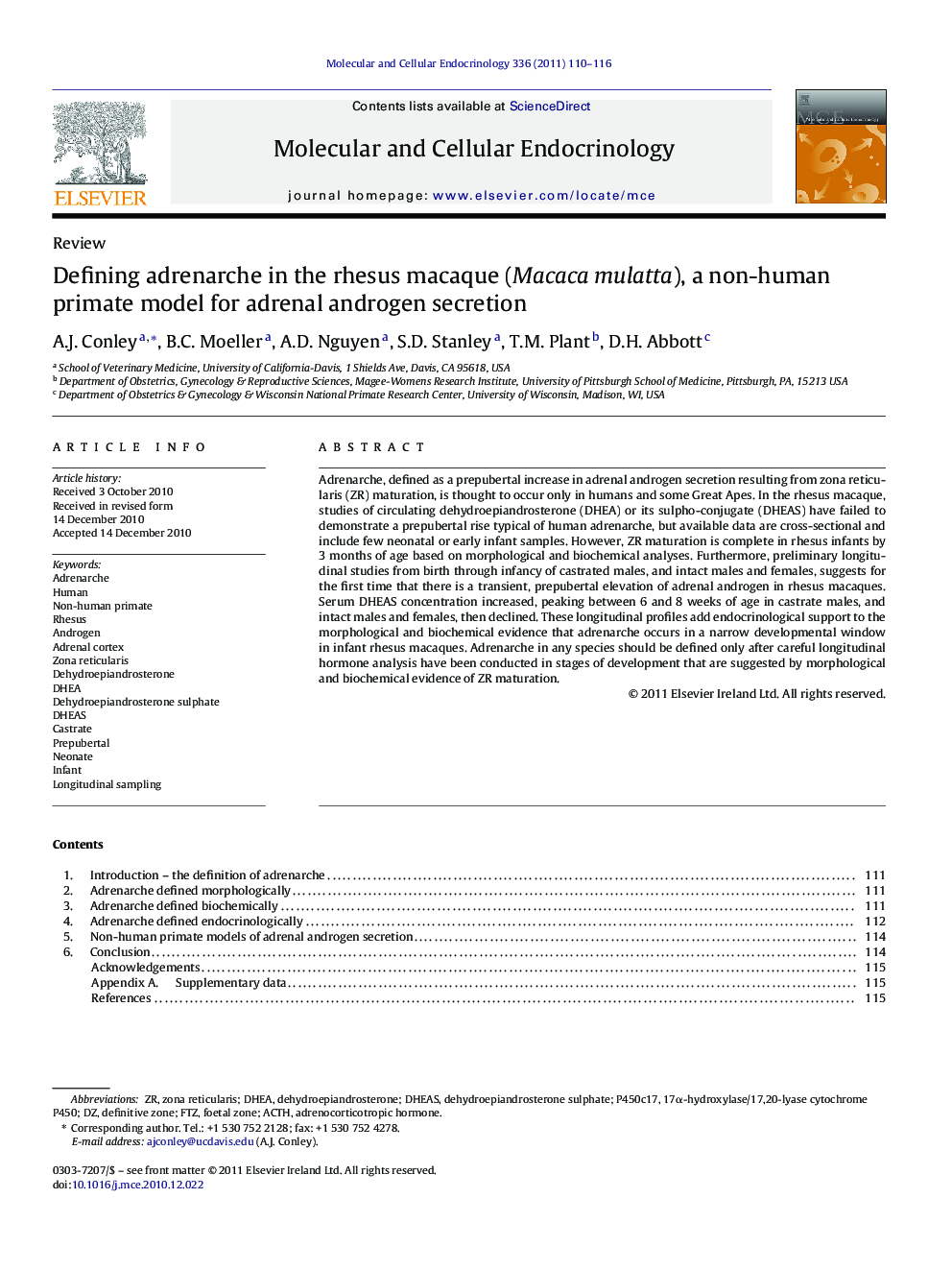| کد مقاله | کد نشریه | سال انتشار | مقاله انگلیسی | نسخه تمام متن |
|---|---|---|---|---|
| 8477900 | 1550934 | 2011 | 7 صفحه PDF | دانلود رایگان |
عنوان انگلیسی مقاله ISI
Defining adrenarche in the rhesus macaque (Macaca mulatta), a non-human primate model for adrenal androgen secretion
دانلود مقاله + سفارش ترجمه
دانلود مقاله ISI انگلیسی
رایگان برای ایرانیان
کلمات کلیدی
DHEAdehydroepiandrosteroneACTHCastrateLongitudinal samplingzona reticularisDHEASP450c17FTZAdrenarche - آدنارچAndrogen - آندروژنHuman - انسانRhesus - رسیوسDehydroepiandrosterone sulphate - سولفات DehydroepiandrosteroneAdrenal cortex - قشر آدرنالnon-human primate - نخستیسانان غیرانسانیNeonate - نوزاد Infant - نوزادadrenocorticotropic hormone - هورمون adrenocorticotropicPrepubertal - پیش دبستانی
موضوعات مرتبط
علوم زیستی و بیوفناوری
بیوشیمی، ژنتیک و زیست شناسی مولکولی
بیولوژی سلول
پیش نمایش صفحه اول مقاله

چکیده انگلیسی
Adrenarche, defined as a prepubertal increase in adrenal androgen secretion resulting from zona reticularis (ZR) maturation, is thought to occur only in humans and some Great Apes. In the rhesus macaque, studies of circulating dehydroepiandrosterone (DHEA) or its sulpho-conjugate (DHEAS) have failed to demonstrate a prepubertal rise typical of human adrenarche, but available data are cross-sectional and include few neonatal or early infant samples. However, ZR maturation is complete in rhesus infants by 3 months of age based on morphological and biochemical analyses. Furthermore, preliminary longitudinal studies from birth through infancy of castrated males, and intact males and females, suggests for the first time that there is a transient, prepubertal elevation of adrenal androgen in rhesus macaques. Serum DHEAS concentration increased, peaking between 6 and 8 weeks of age in castrate males, and intact males and females, then declined. These longitudinal profiles add endocrinological support to the morphological and biochemical evidence that adrenarche occurs in a narrow developmental window in infant rhesus macaques. Adrenarche in any species should be defined only after careful longitudinal hormone analysis have been conducted in stages of development that are suggested by morphological and biochemical evidence of ZR maturation.
ناشر
Database: Elsevier - ScienceDirect (ساینس دایرکت)
Journal: Molecular and Cellular Endocrinology - Volume 336, Issues 1â2, 10 April 2011, Pages 110-116
Journal: Molecular and Cellular Endocrinology - Volume 336, Issues 1â2, 10 April 2011, Pages 110-116
نویسندگان
A.J. Conley, B.C. Moeller, A.D. Nguyen, S.D. Stanley, T.M. Plant, D.H. Abbott,